Porsche’s much-maligned 914 represents one of the most obvious “what if?” scenarios in automotive history. What if the original deal with Volkswagen was honored? What if Porsche found a way to make the six-cylinder variant more distinctive? What if the company’s resistance to having a model that performed better than a 911 had been discarded? What if the 914 chassis had enjoyed the continual development that the 911 has historically enjoyed? The questions go on and on about Porsche’s first commercially marketed mid-engine automobile. This brilliant white 1970 Porsche 914-6 is a good example of everything that went right and wrong with Posche’s 914 chassis. Is this a car that had a lot of potential for greatness or was it a fool’s errand when it debuted in 1970? Has its status as an investment vehicle justified its rightful place in Porsche’s history?
There are numerous stories available on the internet to anyone with an interest in how the 914 came to be. The Reader’s Digest version is that Porsche entered into an agreement with Volkswagen to design, build, and market a lower-cost mid-engine sports car. The Volkswagen version was to be powered by one of their air-cooled flat-four engines, while Porsche versions would enter the market with the firm’s more powerful flat-six nestled in its engine bay. As with any big plan, compromises and adaptations were made. What resulted was a car that was marketed as both a Volkswagen-Porsche in Europe and strictly a Porsche in North America, although Volkswagen engines powered a great percentage of 914s sold there.
The mid-engine chassis was a bases-loaded home run. The car’s rigid structure and the ability to bolt in a Porsche flat-six and many 911 suspension and braking parts had customers who knew how to make fast cars salivating at the possibilities. For the average customer, the car was hampered by a set of compromises. The earlier 1.7 liter Volkswagen engines were not up to the challenge of sports car use, the tail shift transmission (even though it was an adapted Porsche unit) had vague linkage and was hard to shift smoothly, and the styling was universally damned with lukewarm praise at best. It didn’t help that cost-cutting measures such as a fixed passenger seat left customers questioning just what kind of quality they could expect from a car with a Porsche badge on it.
Customers who ponied up nearly 911 money for one of the Porsche 914-6 models sold in the first few years of production were at least rewarded with a real Porsche engine sitting behind them. Sadly, Porsche never offered its hottest flat-sixes in the 914 line and ultimately abandoned offering the six as an option at the end of the 1972 model year. That was a shame, as later revisions to the car added a proper passenger seat, and the transmission was upgraded with a better shifter. A 2.0-liter version of the Volkswagen flat-four became available in 1973. This engine offered performance nearly as good as the former Porsche engine but at a much lower cost. After the mid-model revisions, Porsche seemed to lose interest in the car. It quietly left the market in 1976.
The 1970 Porsche 914-6 you see here is a very nice example of this groundbreaking sports car in mostly original condition. We are told that it was owned by a gentleman in Seaside, California since 2003. Being in coastal California, it wasn’t hard for him to find a suitable mechanic specializing in Porsches. The first step was to have a gentleman mechanic by the name of Dave Loop completely rebuild the engine. That rebuild was enhanced by boring out the original engine to 2.5 liters. A bump in displacement is common practice for flat-six Porsche engines due to their continual development and the fact that buyers of such cars are never happy with the horsepower they have. The good news is that this warmed-up engine is still stamped with the original number on the case. This can be backed up with a Certificate of Authenticity that will come with the car.
The spending didn’t end there. At the time of the rebuild, the car was treated to a full respray in its original Ivory White color. Once the mechanical and cosmetic refurbishment was completed, the car was daily driven from 2003 through 2012. From that point, it became a weekend car. One would think that so much use would wear the car out and leave it a rusty mess similar to many of the 914s we have chronicled here. Not so. The car’s charmed California life has blessed it with a solid set of floor pans with no sign of repairs evident. The only unsightly flaw we can see in the pictures above and below is the separation of the vinyl overlay on the dash, an updated stereo system, a replacement shift knob, and an aftermarket steering wheel.
Having been a driver, one can expect some imperfections and a few liberties being taken with parts and such. The engine, which is said to run strong, does have several non-stock parts bolted to it. There is no mention of the original parts coming with the sale. This is something to ask about if you are interested in the car. Once you get past the engine, the seller tells us that the transmission shifts smoothly and the mechanical parts and pieces are in proper working order. One curiosity is the relocation of the battery to the front trunk. This may warrant a look at the original location of the battery in the engine compartment. While the current value of good 914-6s is high, the forecast for the future pulls those numbers even higher. This may have been a factor in the car’s move from daily to limited use. It may also be the reason it has been put on the market. Sadly, it is hard to enjoy your classic when you know that a simple wreck can put a dent in your retirement plans.
If you are a fan of Porsche’s 914 variants, then this 1970 Porsche 914-6 for sale on eBay in Monterey, California may be a vehicle of interest for you. With some careful modifications made, this Porsche presents well and is original enough to be considered an investment. With an asking price of $78,500 or best offer, do you think this So-Cal Porsche is priced right?
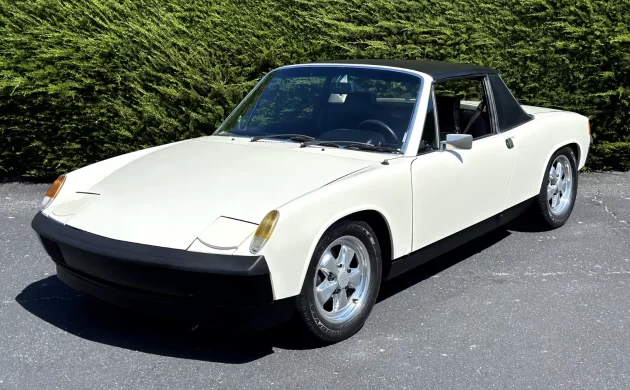
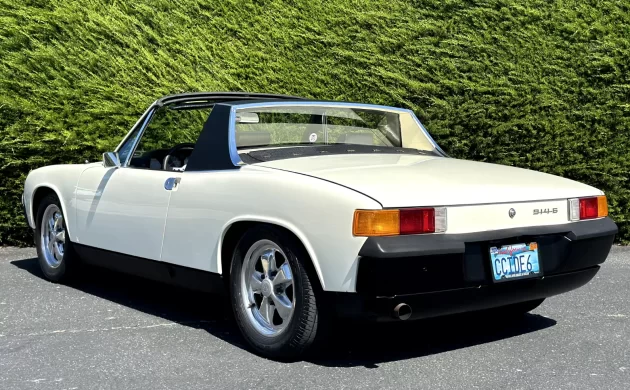
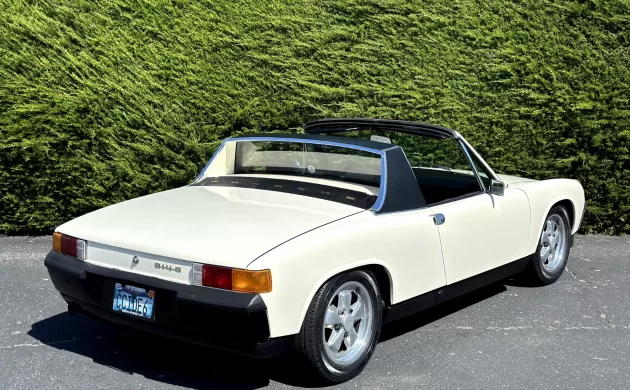
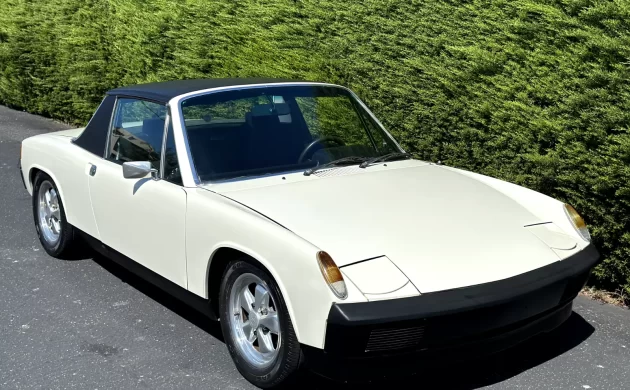
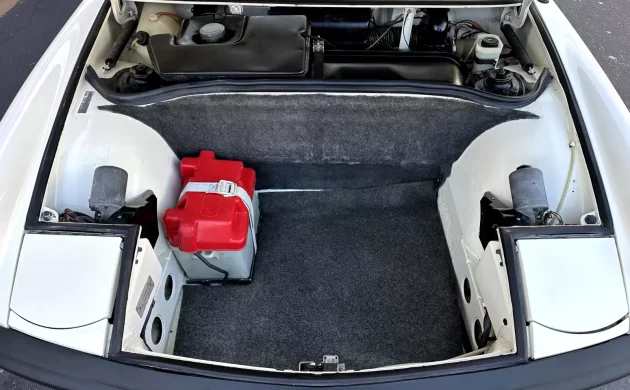
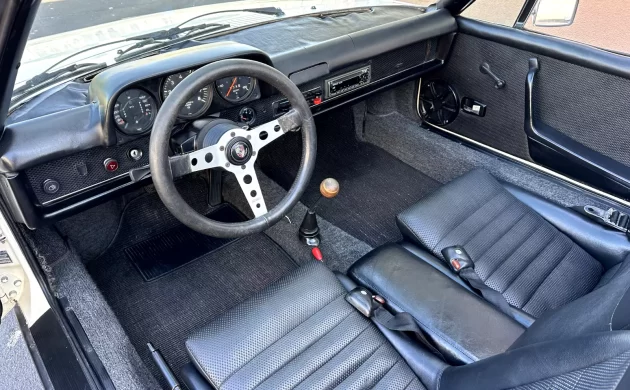
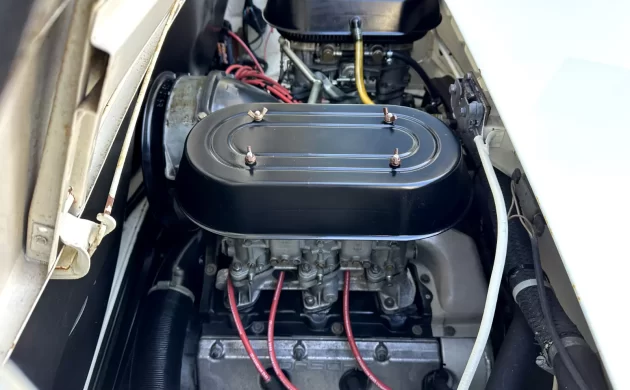



Monterey is in Northern California.
78K for this car seems to be VERY pricey to me
Would much rather have an ’18 or ’19 Cayman GTS for that kind of money.
I know this price seems high, but I remember when $20k seemed way to high for one of these, and they aren’t making any more of them! And, when was the last time you saw one come up for sale?
914Shifter “when was the last time you saw one come up for sale?”
Respectfully, when’s the last time anyone bothered to look?
Thr price is too high! I would prefer the 2,0 four engine as service will be much cheaper. Genuinw Porsche parts cost a BIG bundle.
In my opinion, 78k is a good deal for this car if its a nice one. The only way to know is to look at it in person. I don’t think a 2.0 four is that much cheaper to maintain than this 911 engine, and bumping it up to 2.5 makes a huge difference. My 71 has the stock 2 liter engine in it. I had a 914 conversion with a 2,4 and a real six with a 3.0 and a bigger engine makes a huge difference in drivability. To the guy who wants a Cayman, they are not even remotely similar cars.
I would go with a Porsche Cayman . . . a real Porsche instead of a warmed-over Volkswagen with looks that only a mother could love.
That bore out to 2.5 is what the factory did for their race engines. Higher compression, worked cylinder heads and you had a bullet. The 911 T front end and the the 5 lug hubs and brakes really made a handler out of these cars. Say what you want about the looks, whether it’s Porsche or VW, etc. it’s one of the greatest driving cars ever built, and it’s pure fun.
This car we helped build has a 2.5 engine with the same upgrades as the factory engines. Not too many beat this car on autocrosses and on the race track.
Bob, is that the Fullers Insurance race car? I wonder where it is now?
At least the world’s worst side marker lights were ditched here.
cool ride, not 78,000 cool though.